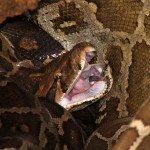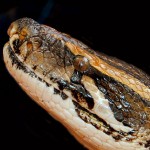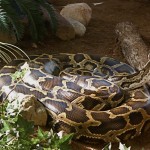Species: Python bivittatus
English Name: Burmese Python
Chinese Name: 緬甸蟒
Family: Pythonidae
Description:
This is one of the largest snakes in the world growing 3,7 m long on average. Burmese Phyton have a distinctive patterning: dark brown blotches on a light tan background. They are mostly found in forests, mangroves and rainforests, but also in grasslands, marshes, streams and rivers.




Photos used under a Creative Commons license
References:
– Zhao, E., Leung, V., Leung, C. V. (1999). Notes on amphibians and reptiles of Macau. Sichuan Journal of Zoology 18 (4) , 147-150.

